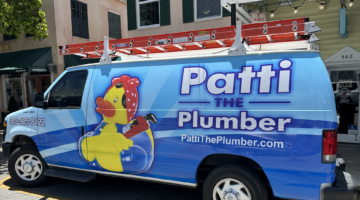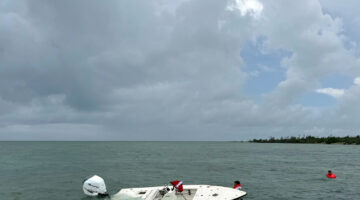BOARD OF COUNTY COMMISSIONERS CONSIDER CHARTER COUNTY OPTION
MONROE COUNTY, FL – The Monroe County Board of County Commissioners (BOCC) will explore options to become a charter county in order to pursue alternatives to fund transportation and infrastructure pitfalls that will be forthcoming in the future. The BOCC gave preliminary direction to the County Attorney’s office to draft a proposed charter that will be the subject of future workshops and public hearings.
The Commission took this step to explore revenue options only available to charter counties. The BOCC came to this point after unsuccessfully trying to convince the State Legislature to create a new type of tax to fund sustainability-related expenses due to rising flood waters and other climate-related effects. Unfortunately, without the support of Tallahassee leadership to authorize that new type of tax, the County did not have the option of asking local voters if they would approve that tax. However, the transportation surtax is available under current law for charter counties for a broad range of transportation and transit-related expenditures. As a non-charter county, Monroe County voters would have to approve a charter to take advance of the transportation surtax. Since the transportation surtax is authorized by current law, local voters could approve that tax without the permission of Tallahassee.
The transportation surtax would function much like the current one-penny infrastructure sales surtax that has been in place for decades. In 2022, County voters approved extending that tax with over 65 percent approval. Experience has shown that roughly 2/3 of sales taxes collected in the Florida Keys is paid by visitors, so the transportation surtax would be expected to shift the majority of the cost of the transportation and transit improvements from local taxpayers to visitors.
The commissioners said they have absolutely no desire to interfere in the operations of the municipalities in Monroe County and directed County Attorney Bob Shillinger to draft a charter that preserves municipal independence. Charters in other counties allow county rules to preempt city rules, but the BOCC expressed its desire that a Monroe County charter would not do so.
For reference, Monroe County has many active road resiliency projects in progress and projects that will need to be done in the future, as well as bridgework that will need to be completed, other major infrastructure projects, and ongoing maintenance costs of existing infrastructure.
Examples
- Roads (active) ($36 million)
- Sands Subdivision: Current cost ‐ $22 million; available grant $8.1 million
- Twin Lakes: Current estimate $11 million; grants of $9.4 million
- Stillwright Point: Old estimate $22 million; design grant of $1.5 million
- Roads (in the pipeline) ( $44.5 million + $1.07 billion)
- Conch Key: estimate $8 million; Resilient FL grant $4 million (50%)
- Winston Waterways: estimated $31 million; Hoping for Resilient Florida $15.5 million
- Big Coppitt: estimated $50 million; Hoping for Resilient Florida $25 million
- Remaining roads modeled to need work by 2030 estimated at $1.07B
- Bridges ($68 million)
-
- Sugarloaf: design complete; estimated at $5‐6 million
- Similar Sound: estimated at $7‐8 million
- Card Sound: estimated at $54 million by 2030
Other Major Items ($24-$27 million a year)
- TraumaStar ($53 million) ($4.5 million/yr thru 2038)
- Still paying off sewer debts
- $12 million/yr thru 2025
- $10.2 million/yr 2026 ‐ 2030
- $9.4 million/yr 2031 ‐ 2038
- 2014/16 capital debt through 2026 ($6 million/yr)
- Seven Mile Bridge commitment ($0.7 million/yr thru 2051)
- Increasing Insurance ($3‐$5 million)
Ongoing costs of operations and maintenance of already existing infrastructure
- 5% ‐ 6% of initial capital outlay per year (corrected for inflation)
- Examples
- Plantation Key Courthouse and Jail ‐ $1.8 million/year
- Emergency Operations Center (starting FY25) ‐ $1.8 million/year
- Pumps on road projects will incur utility bills and maintenance costs
- In 2011, it was estimated that regular road replacement on a 20-year cycle would require $4 million/yr. In 2022 dollars, it is closer to $7.8 million/yr (using NHCCI from USDOT)



No Comment